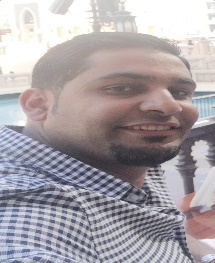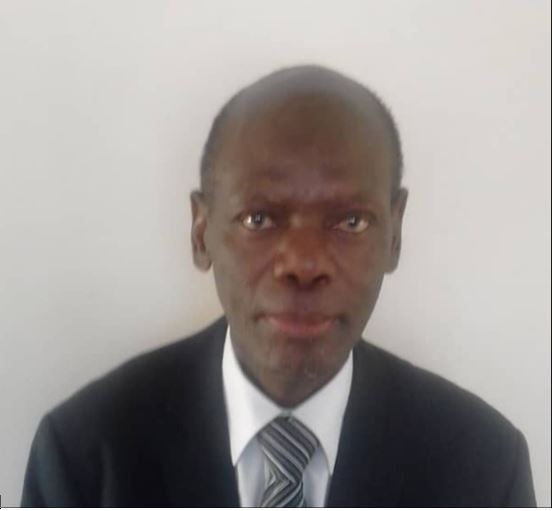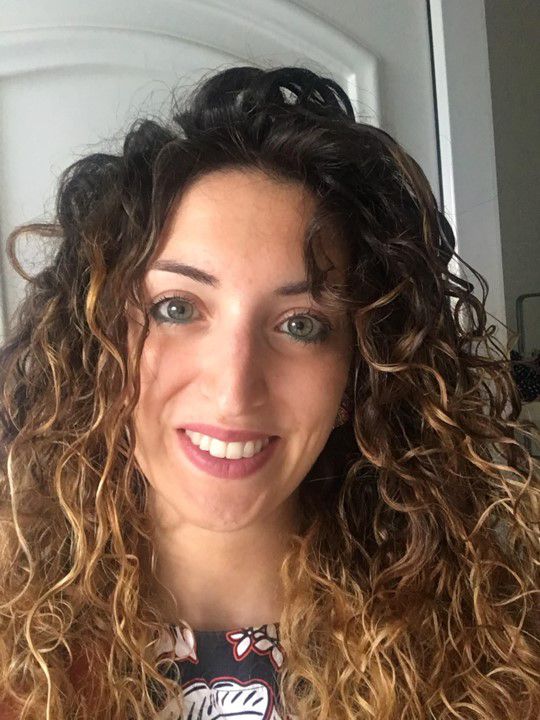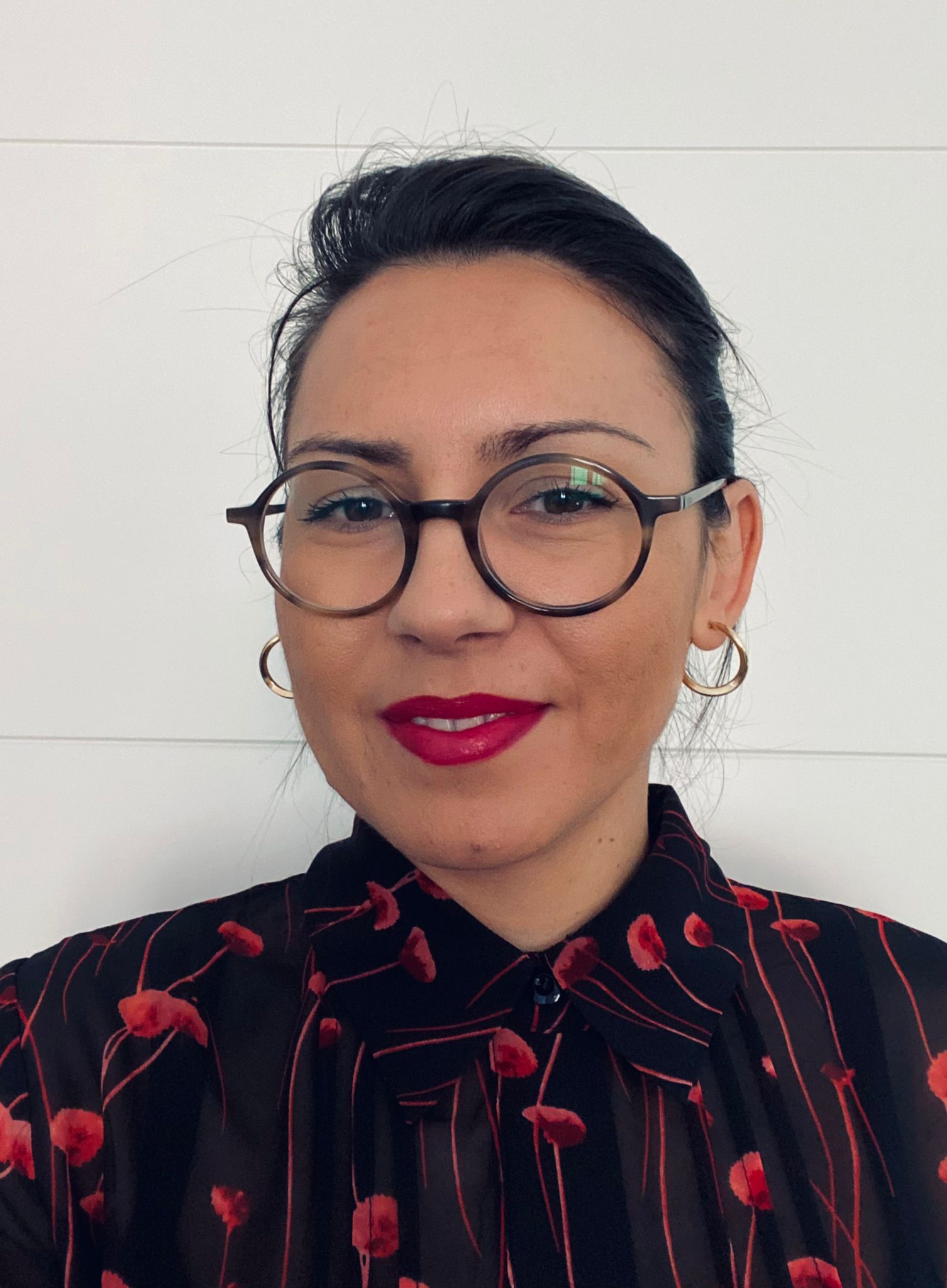Scientific Program
Keynote Session:
Title: Let's hack the crisis together!
Biography:
Aloys Tan is a medical practitioner by profession with 40+ years of experience in the health care industry in the Netherlands and Asia. His interest lies in bridging the gap between fundamental research and its daily applications, particularly in the Healthcare realm in the European-Asia base. Between 1980 and 2000 he was chairman of the Pulmonology department of St. Joseph Hospital Veldhoven. Ever since, he has held various management positions in the areas of health care, social services and IT. Currently, Dr. Tan is partner and advisor in Landcent Europe Division and is instrumental in guiding Landcent’s regulatory initiatives in the region.
Abstract:
Let's hack the crisis together!
Be the change at HIMSS21 & Aloys Tan startup at Amsterdam
#1 Humanity is facing significant health and economic challenges, and we need to find ways to tackle them.
#2 Future of Healthcare Report date 8-9-2021: Exploring Healthcare Stakeholders’ Expectations for the Next Chapter
#3 we are always open to new ideas and are excited to discuss research projects 2021-2026
The impact of "Winning Post Covid-19".
I wonder what is the wisdom behind the Coronavirus pandemic?
Case study Economic/Health Care analysis Startup Amsterdam
Can we make better #startup failure in #Amsterdam / Dubai/ World? Together? By meeting the right people! Are you?
Have you experienced #startup failure in #Amsterdam or have you participated with your venture in more than one accelerator program?
Research & International Relations by Startup Amsterdam
Sarah Herzog
I am looking forward to hearing from you! The more perspectives we understand, the better the changes we can initiate in the ecosystem! You can also leave me a message and I'll get back to you.
Title: Obstructive Sleep Apnea
Biography:
Abdelmalek is a Registered Polysomnography Technologists (RPSGT) member since February 2018, Registered Sleep Technologist (RST) Member since October 2019, has certification in Clinical Sleep Health (CCSH) June 2020, Pediatric sleep certificate (BRPT) August 2021, Diploma in RESPAIRATORY THERAPY PROGRAM from the University of Jordan, January 2012 and Bachelor degree in Nursing from Zarqa Private University-Jordan, February 2010.
Abstract:
Objective :
- What the mean of obstructive sleep apnea ?
- Diagnose obstructive sleep apnea by using polysomnography and scoring by using last update of AASM.
- Overview of polysomnography
- What are the type of sleep apnea (obstructive . central . mixed )
- What are the symptoms , cause and risk of sleep apnea ?
- Impact sleep apnea on school performance ?
- COVID 19 and obstructive sleep apnea ?
- Last updated for treating the sleep apnea ( PAP , UPER AIRWAY STIMULATION , UPPP , positional )
Method :
Polysomnography, also called a sleep study, is a comprehensive test used to diagnose sleep disorders. Polysomnography records your brain waves, the oxygen level in your blood, heart rate and breathing disorder . polysomnography provide a great deal of information about your sleep the sleep apnea or another sleep-related breathing disorder.
Polysomnography technique :
You may be advised to avoid drinks or food containing alcohol or caffeine during the afternoon and evening before polysomnography. Alcohol and caffeine can change your sleep patterns, and they may make symptoms of some sleep disorders worse.While you sleep, a technologist monitors your to check for any breath problem you have during sleep and also monitoring the following activity :
Conclusion :
Sleep apnea is a common disturbance with many effects on sleep and daytime functioning. Obstructive sleep apnea is linked to many important adverse daytime consequences such as poor performance, accidents, hypertension, heart disease, stroke, and insulin resistance. By sleep study we can determine the type of breath disorder and which is the best treatment compatible.
Title: Dual immune checkpoint inhibitors in the treatment of malignant pleural mesothelioma
Biography:
Nightingale Syabbalo is a Consultant Physician, and Head of the Department of Medicine, Kitwe Central Hospital, Zambia. Specialties: pulmonology, cardiology, nephrology, gastroenterology, neurology, and infectious diseases, including tuberculosis, HIV/AIDS, and corona virology.CEO, Chief Specialist Physician, Private Practitioner, Medi-Clinic/Nabanji Medical Centre, Obote Avenue, Kitwe, Zambia.Professor of Physiology and Medicine, School of Medicine, Cavendish University, Zambia, Lusaka.Adjuvant Professor of Physiology and Medicine, M. C. Sata School of Medicine, Copperbelt University, Ndola, Zambia.Head of the MB., ChB Program, Texila American University Zambia, Lusaka, Zambia
Abstract:
Introduction:
Malignant pleural mesothelioma (MPM) is a highly aggressive and incurable cancer that originates from the mesothelial cells of the pleural cavity [1]. It is associated with a long latency period of inhalation of asbestos fibers of 20-40 years [2]. There are three subtypes of MPM, such as epithelioid (60%), sarcomatoid (10%), and biphasic (30%), which comprise both epithelioid and sarcomatoid histological features.
Treatment:
The standard first-line chemotherapy for MPM consists of the doublet cisplatin plus pemetrexed. The regimen has a low response rate ranging from 26.3% to 41% [3], and extends the median overall survival (OS) by 2-3 months. Addition of bevacizumab a vascular endothelial growth factor (VEGF) inhibitor to cisplatin plus pemetrexed has been shown to extend the median overall survival up to 19 months, versus 16 months with cisplatin plus pemetrexed chemotherapy [4]. Tumour cells express immune suppressive receptors known as immune-checkpoints (IC), which inhibits T cell immune response, such as cytotoxic T-lymphocyte-associated antigen-4 (CTLA-4 [5], programmed cell death-1, and its ligands PD-1/PD-L1/1, and lymphocyte activation gene-2 [6]. Currently, there are several monoclonal antibodies which have been developed to block the immune checkpoints, such as nivolumab, ipilimumab, and durvalumab [7]. The combination of nivolumab a CTLA-4 inhibitor, and ipilimumab a PD-1 inhibitor has been shown to be superior compared with nivolumab alone in the treatment of MPM. The dual ICI has been shown to significantly improve the disease control rate (DCR) to 52% versus 40% compared with nivolumab alone, and to increase the objective response rate (ORR) to 28% vs 19%, and the median progression free survival (PFS) to 5.6 months versus 4 months compared with nivolumab alone [8]. However, dual ICI treatment was associated with higher treatment-related adverse effects (93% vs 89%) [8]. Updated results of the IFCT-1501 MAPS2 results revealed median overall survival of 15.9 months (10.7-22.2) in patients treated with nivolumab plus ipilimumab compared with 11.9 months (6.7-17.4) in patients treated with nivolumab alone [9]. The CheckMate trial has shown that the median OS with this treatment was almost similar in the epithelioid histopathology, and non epithelioid histopathology subtypes (18.7 months versus 18.1 month, respectively) [10]. There was significant benefit observed in the non-epithelioid subgroup for the checkpoint inhibitor combination versus the standard of care chemotherapy (18.7 month vs 8.8 months). However, this might have been attributed to the established inferior effect of chemotherapy in the non-epithelioid histological subtype [10].
Conclusions:
Dual immune checkpoint inhibitors, such as nivolumab plus ipilimumab significantly improve the ORR, DCR, median OS, and PFS, and are effective in both the epithelioid and non-epithelioid histology subtypes of MPM. Dual ICI therapy is superior to SoC chemotherapy, particualaly in the non-epithelioid histotype, which has a poor ORR to chemotherapy. Currently, nivolumab plus ipilimumab immunotherapy is recommeded as first-line therapy for MPM.
Title: COPD and lung cancer: is the AIM2 inflammasome at the crosstalk?
Biography:
Dr. Chiara Colarusso is currently a Post-Doctoral Researcher in Pharmacology at the Department of Pharmacy, University of Salerno. Her actual scientific interest is on the molecular/cellular mechanisms involved in chronic lung inflammation at the basis of lung diseases, such as COPD and lung cancer. In particular, she is being focusing on the inflammasome-dependent pathways puzzling from the process of lung cancer establishment up to progression that occurs after therapeutic treatment. In this regard, another goal she is trying to reach is to understand cellular and molecular mechanism/s at the basis of ICI’s resistance in lung cancer patients.
Abstract:
Background. Epidemiological evidence indicate that almost 40% of COPD patients develop lung cancer; whereas cigarette smoke (CS), the leading cause and the most common risk factor for both COPD and lung cancer, is at the basis of almost 90% of lung cancer establishment.
Aims and objectives. In our previous study we demonstrated AIM2 inflammasome drives the release of pro-inflammatory and pro-fibrotic factors involved in the exacerbation stage of COPD and that it could play a pro-carcinogenic role in lung cancer, in that its activation in tumor-associated plasmacytoid dendritic cells (pDCs) is associated to lung tumor cell proliferation.
Methods. We took advantage of a mouse model of COPD induced by CS inhalation. We compared the murine data to human lung adenocarcinoma-derived samples stratified according to the smoking and COPD status.
Results. We demonstrated that the exposure to first-hand smoking leads to emphysematous changes typical of human COPD, associated to bronchial tone impairment, collagen deposition and IL-1-like cytokine release. We found that AIM2 was involved in smoking-induced lung inflammation and COPD-like features in that its expression was higher in lung recruited DCs and macrophages of smoking mice compared to mice exposed to filtered air (control group). On the other hand, we found that AIM2 expression was higher in the cancerous tissues of lung cancer patients than non-cancerous (normal) tissues, independently of COPD and smoking status. Interestingly, higher expression of AIM2 in non-cancerous tissues of smoker lung cancer patients with COPD was associated to a higher hazard ratio of lower survival rate than patients who presented lower levels of AIM2.
Conclusions. Our data imply that AIM2 inflammasome plays a role at the crosstalk between smoke-induced COPD and lung cancer, affecting patients’ survival.
Title: Respiratory System
Biography:
Zoya Zabeen is a student pursuing her carrier with a Bachelor's degree in “Cardiology Techniques “at Jamia Hamdard University, India.
Abstract:
Respiratory system? The respiratory system is the network of organs and tissues that help you breathe. It includes your airways, lungs and blood vessels. The muscles that power your lungs are also part of the respiratory system. These parts work together to move oxygen throughout the body and clean out waste gases like carbon dioxide. Respiratory system do? The respiratory system has many functions. Besides helping you inhale (breathe in) and exhale (breathe out), it: allows you to talk and to smell. Warms air to match your body temperature and moisturises it to the humidity level your body needs. Delivers oxygen to the cells in your body. Removes waste gases, including carbon dioxide, from the body when you exhale. Protects your airways from harmful substances and irritants. What conditions affect the respiratory system? Many conditions can affect the organs and tissues that make up the respiratory system. Some develop due to irritants you breathe in from the air, including viruses or bacteria that cause infection. Others occur as a result of disease or getting older. Conditions that can cause inflammation (swelling, irritation and pain) or otherwise affect the respiratory system include: allergies: inhaling proteins, such as dust, mild, and pollen, can cause respiratory allergies in some people. These proteins can cause inflammation in your airways. Asthma: a chronic (long-term) disorder, asthma causes inflammation in the airways that can make breathing difficult. Infection: infections can lead to pneumonia (inflammation of the lungs) or bronchitis (inflammation of the bronchial tubes). Common respiratory infections include the flu (influenza) or a cold. Disease: respiratory disorders include lung cancer and chronic obstructive pulmonary disease (copd). These illnesses can harm the respiratory system’s ability to deliver oxygen throughout the body and filter out waste gases. Aging lung capacity decreases as you get older. Damage: damage to the respiratory system can cause breathing problems.
Title: COPD mice model optimization
Biography:
Nada Slama is a PhD student from the Yahia fares University, Medea, Algeria. Her research interests include pulmonolofy, immunology and many more. She has attended several respiratory conferences.
Abstract:
Chronic obstructive pulmonary disease (COPD) is a common chronic respiratory disease of human beings characterized by not fully reversible airflow limitation, Animal model of cigarette smoke induced chronic obstructive pulmonary disease (COPD) is the primary testing methodology for drug therapies and studies on pathogenic mechanisms of disease. Animal models of disease provide a valuable, ethically and economically viable experimental platform to examine these mechanisms and identify biomarkers that may be therapeutic targets that would facilitate the development of improved standard of care ,The classic animal model of COPD is both time consuming and costly.. In the present study, a short time murine model of cigarette smoke extract induced COPD was used to investigate the time course of airway and pulmonary inflammatory response. Groups of BALB/C mice were intraperitoneally injected with cigarette smoke extract or to saline for 2 months, The pathological changes and the inflammation level was evaluated by hematoxylin eosin (H&E) staining. Results: Intraperitoneal injection of CSE induced in response to cigarette smoke extract , inflammatory cells (i.e. neutrophils, macrophages ) progressively accumulated both in the airways and lung parenchyma of mice. Furthermore, a perivascular and peribronchial clear infiltration of lymphocytes was observed accompanied with a mild destruction of alveolar walls (emphysema) .Conclusions, the present study showed that short term (60 days) intraperitoneal exposure to CSE leads to chronic inflammation, alveolar septal degradation and emphysema accompanied in mice. All histopathological alterations in this model are shared with the COPD patients lung histopathology.
Keywords : COPD, animal model, cigarette smoke extract, inflammation
Title: Sphingosine-1-phosphate is involved in lung cancer-related inflammation
Biography:
Dr. Michela Terlizzi, PhD, is actually a Research Scientist at the Department of Pharmacy of the University of Salerno (Italy). Dr. Terlizzi’s research activity over the years has involved the following lines of research providing an important contribution to the respiratory system physiology field: Study of molecular and cellular pathways involved in the alteration of physiological respiratory function following exposure to carcinogens, cigarette smoke and environmental pollutants both in in vivo models and in human samples; Identification of new inflammatory pathways involved in diseases of the respiratory system.
Abstract:
Aims and Objectives:
Sphingosine-1-phosphate (S1P) is a membrane-derived bioactive phospholipid exerting a multitude of effects on respiratory cell physiology and pathology through five S1P receptors (S1PR1-5), although its exact mechanism is still elusive and contradictory.
In our previous studies, we found that S1P induced proliferation of epithelial lung cancer cells through a S1PR3/SPHK II (S1P receptor 3/Sphingosine Kinase II)-dependent intracellular/intranuclear signalling. In this study we aimed to shed light on the role of S1P, whose levels are elevated in lung cancer patients’ plasma, as a modulator of tumor microenvironment, focusing on its effect on circulating cells.
Methods :
We used peripheral blood mononuclear cells (PBMCs) isolated by healthy volunteers and lung cancer patients. Cells were stimulated with S1P 10nM and the release of pro-inflammatory cytokines was evaluated after 8 hours from the treatment.
Results:
We found that lung cancer-derived PBMCs expressed higher levels of S1PR3 and active ceramidase, compared to healthy cells. Moreover, the administration of S1P induced the release of TNFα, IL-6 and IL-8 from lung cancer- but not from healthy-derived PBMCs in a ceramidase and SPHKs-dependent manner. Interesting, only IL-6 release was S1PR3 dependent.
Conclusions:
Our data suggest that S1P regulate the pro-inflammatory signalling in pathological conditions, but not in physiological conditions where S1PR3 is poor expressed and ceramidase enzyme is inactive, implying a protective role of S1P in physiological conditions and highlighting S1P as one of the crucial mediators for lung carcinogenesis-associated inflammatory processes.
Title: Evaluation of the prevalence of acute cardiological events in patients with chronic obstructive pneumonic disease during the recovery period after an exacerbation-related hospitalization
Biography:
Dr. Ourania Kotsiou is 36 years old. She is Assistant Professor on Human Pathophysiology in the Nursing Department, University of Thessaly, Greece. She holds a Ph.D. in pleural pathophysiology from the University of Thessaly. She was licensed as a Respiratory Physician in 2017. Since then, she has been serving as principal investigator in several funded Research Programs at the University of Thessaly. With four years of research background, she gained considerable expertise to identify scientific knowledge gaps and clinical research priorities. She has published more than 50 papers in reputed journals and serves as an editorial board member of repute
Abstract:
Aims and Objectives:
Patients with chronic obstructive pulmonary disease (COPD) more frequently have cardiovascular comorbidity than healthy individuals. The impact of cardiovascular events on COPD patients during the recovery period after an exacerbation-related hospitalization remains poorly studied. This study aimed to evaluate the prevalence of acute cardiac events in COPD patients during the recovery period after an exacerbation-related hospitalization through remote monitoring.
Methods :
ZENSOR devices (INTELESENS Ltd) and m-health system, a 24-hour recording system of three biosignals (electrocardiogram, heart and breath rates) were implemented for 21 days in COPD patients hospitalized in the Respiratory Medicine Department, University of Thessaly, Greece from September 2019 to February 2020.
Results:
18 COPD patients participated in the study. 83% of them were male (mean age: 73±6 years). 39% of the patients had stage III/IV disease and received home oxygen therapy. 95% had 3±1 comorbidities. 28% of patients had chronic coronary heart disease and 22% had chronic atrial fibrillation. 9072 recording hours were analyzed. Regardless of the COPD stage, half of the patients, developed first-diagnosed arrhythmological events that required therapeutic intervention. 11% of patients had persistent episodes of ventricular trigeminy, 11% presented a third-degree atrioventricular block, 27% had persistent bradycardia, and 5% had acute atrial fibrillation. 11% and 44% of patients experienced episodes of supraventricular tachycardia and premature ventricular contractions during sleep, respectively. 89% of the participants reported that they were satisfied with the use of the device.
Conclusions:
Zensor device effectively diagnose arrhythmological events that required medical intervention in patients with COPD during the recovery period after an exacerbation-related hospitalization.
Title: ASSOCIATION AND MANAGEMENT OF PRE-EXISTING LUNG DISEASE WITH COVID19
Biography:
Dr. Ayush Pandey, is a resident doctor for respiratory medicine in SGT University, India. He has attended several pulmonology conferences. His research interests include pulmonology, costemology and many more.
Abstract:
The severe acute respiratory syndrome coronavirus-2 emerged as a serious human pathogen in late 2019, causing the disease coronavirus disease 2019 (COVID-19). The most common clinical presentation of severe COVID-19 is acute respiratory failure consistent with the acute respiratory distress syndrome. Airway, lung parenchymal, pulmonary vascular, and respiratory neuromuscular disorders all feature in COVID-19.
People with pre-existing respiratory disease had a modestly increased risk of severe COVID-19. People with asthma had an 18% increased risk of hospital admission with COVID-19, but there was no evidence that asthma was associated with an increased risk of death. Even in people with asthma who were prescribed three or more airways medications, the risk of death was modestly raised at worst compared with people without respiratory conditions. In the whole population, COPD was associated with a 54% increase in the risk of hospitalisation or death. The risks in people with bronchiectasis were modestly above one, although they were imprecisely estimated for death. Cystic fibrosis was too uncommon to estimate risks with precision, and no one with cystic fibrosis died from COVID-19. Interstitial lung disease was associated with an increased risk of severe COVID-19, while lung cancer was associated with a near doubling of severe COVID-19. COVID-19 vaccines (initial doses and boosters) and preventive measures for COVID-19 are important. Approved and authorized COVID-19 vaccines (initial doses and boosters) are safe and effective and should be administered to people at higher risk including people with underlying medical conditions.
Older adults are more likely to get severely ill from COVID-19. More than 81% of COVID-19 deaths occur in people over age 65. The risk of severe COVID-19 increases as the number of underlying medical conditions increases in a person. Long-standing systemic health and social inequities have put various groups of people at increased risk of getting sick and dying from COVID-19.
The most important thing is to keep control of your condition. Keep taking your medicine. Never stop or change medications without talking to your doctor first. Rescue drugs like bronchodilators don’t affect your immune system. If you have an asthma flare and need to use medicine, an inhaler is best. A nebulizer might spread the virus through the air if you use it while you’re sick. If you must use a nebulizer, do it in a room by yourself.
Patients with hypoxaemic COPD and COVID-19 should be given controlled oxygen therapy as the first step.18 If hypoxaemia is insufficiently controlled with maximum oxygen supplementation, high-flow nasal cannula (HFNC) or CPAP with high oxygen flow should be considered. HFNC has recently been suggested as a management option in patients with COVID-19 with acute hypoxaemic respiratory failure.
Title: ESTABLISHMENT OF COVID-19 RESPIRATORY INTENSIVE CARE UNIT – AN ARDUOUS EFFORT
Biography:
T.N. Murthy is a senior respiratory therapist in Nizam's Institute of Medical Sciences, India. He has attended several conferences and his research interests include pulmonology, intensive care and many more.
Abstract:
The Corona Virus 2019 was declared as a pandemic in March 2020 by WHO.
Preparing our ICU for the outbreak was a challenging task for the department but was unavoidable.
Non-availability of evidence based protocols globally along with inexperience of situation had been major issues for Planning and implementation of protocols.
The task force laid in front of us was:
- Protocol preparation, Implementation and Education: Prepare and implement isolation protocols and gear up for a surge in ICU bed capacity. High quality training for healthcare staff to ensure patient as well as personnel safety.
- Clinical management and training: Appropriate quality clinical treatment of COVID patients and preparing for post COVID rehabilitation, nutrition, Psychological support
- Optimal Resource management: This included both Human as well as material management. Human resources was under specific strain due to high infectivity rate, influenced by fear and isolation. Ensure adequate supply of ICU equipment like Ventilators, Monitors, Beds etc., for the increasing capacity day by day. Ensure adequate supply of disposable items, PPE kits, N95 Masks, Respirator Masks, Face shields etc.,
- Psychosocial aspects and emotional lability: Education of the workforce on their safety, psychological support and adequate training of allied healthcare professionals to maintain a sane environment.











